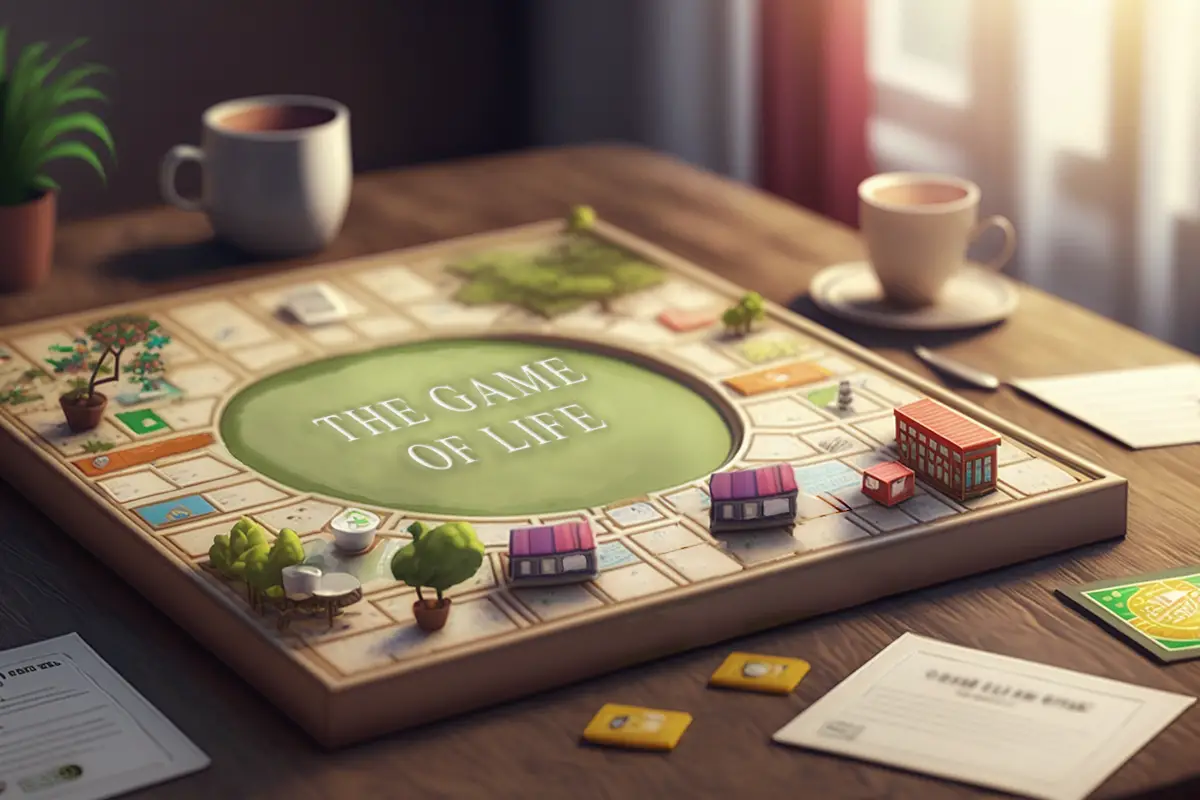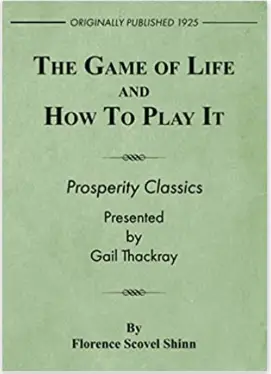Book Summary of “The Game of Life and How to Play it” (1925) by Florence Scovel Shinn
“The Game of Life and How to Play It” is a timeless self-help book by Florence Scovel Shinn, written almost 100 years ago in 1925. The book teaches readers how to create a happy and successful life by applying prosperity principles. Continue reading if you want to learn her nine powerful life-changing principles that have made her book popular for the last century.
This article will explore the nine chapters in the book. We’ll examine the core principles that Shinn teaches in each chapter and discuss how these principles can be applied in our daily lives to create a more fulfilling journey.
1. The Game
The book’s first chapter introduces the idea that life is like a game, and we’re all players. Shinn emphasizes that the game of life is not meant to be a struggle or a burden but rather a joyful experience. She believes we can create a happy and successful life by understanding and applying spiritual principles.
This chapter sets the tone for the rest of the book, emphasizing the importance of viewing life as a game and approaching it positively. It encourages readers to embrace joy and abundance rather than struggle and lack. The first rule of the game is to be happy in your current circumstances, appreciate what you have, and approach life through the filter of a positive mindset.
2. The Law of Prosperity
The Law of Prosperity is one of the fundamental principles discussed in this book. Shinn believes we can attract abundance by developing a prosperous mindset. This involves letting go of limiting beliefs and focusing on the positive aspects of life. She emphasizes the importance of gratitude and affirmations in attracting wealth and abundance.
She explores the idea that abundance is about financial prosperity, health, happiness, and relationships. Shinn teaches readers to focus on what they want rather than what they lack and to use affirmations and visualizations to attract abundance into their lives. She also emphasizes the importance of giving back and teaches readers that generosity and abundance are closely linked. You can only get what you want out of life if you know clearly what it is. Program your subconscious through visualizations, goals, and affirmations to take actions that move you toward what you want in life.
3. The Power of the Word
In this chapter, Shinn explains the power of the spoken word. According to her, our words have the power to create our reality. She encourages readers to use positive affirmations and to speak their desires into existence. She also warns against using negative language, which can attract negative experiences.
This chapter is all about the power of manifestation. Shinn teaches readers to be mindful of their words and use positive affirmations to attract what they want into their lives. She also emphasizes the importance of visualization and imagination and encourages readers to use these tools to create a clear mental picture of their desired outcomes. Be careful what you say as it can program your self-consciousness and build your belief system. Your words can create your reality through self-talk and social interactions.
4. The Law of Nonresistance
The Law of Nonresistance is another principle that Shinn discusses in this book. She believes that resistance and struggle are counterproductive and can prevent us from achieving our goals. Instead, she recommends that we flow with life and accept what comes our way. She emphasizes the importance of trust and faith in the universe to provide for us.
This chapter explores the idea that resistance is a significant cause of suffering. Shinn teaches readers to let go of their attachment to specific outcomes and trust the universe to provide for them. She encourages readers to adopt a nonresistance and flow mindset and embrace the present rather than worrying about the future. Our only job is right thought, right action, and right speech, and to let the laws of the universe do the rest.
5. The Law of Karma and the Law of Forgiveness
According to Shinn, the Law of Karma states that what we put into the universe will return to us. She also believes that we can break negative karmic cycles by practicing forgiveness. This involves letting go of resentments and grievances and seeing the good in others. She also emphasizes the importance of forgiving ourselves for past mistakes.
This chapter explores the idea that our thoughts and actions have consequences and that the universe operates according to specific laws of cause and effect. Shinn teaches readers to be mindful of their thoughts and actions and to practice forgiveness to release negative energy and break karmic cycles. She emphasizes that forgiveness is crucial for our spiritual growth and the well-being of those around us.
6. Casting the Burden
In this chapter, Shinn introduces the concept of “casting the burden.” She believes that we can release our worries and concerns to the universe and trust that everything will work out in our favor. She encourages readers to let go of anxiety and trust the universe’s power to provide for them.
This chapter is all about surrender and trust. She encourages readers to practice faith and to release their burdens to a higher power rather than carrying them around themselves. (This higher power can be God, nature, laws of physics, math, or probabilities).
7. Love
Love is another vital principle discussed in this book. Shinn believes that love is the highest vibration and has the power to heal and transform. She encourages readers to cultivate a loving attitude and to express love in all their interactions.
This chapter explores the idea that love is the key to happiness and fulfillment. Shinn teaches readers to cultivate a loving attitude and to express love in all their interactions, from romantic relationships to everyday interactions with strangers. She emphasizes that love is a feeling and an action, encouraging readers to practice kindness and compassion.
8. Intuition or Guidance
In this chapter, Shinn explains the importance of following our intuition or inner guidance. She believes we all have an inner compass to guide us toward our true desires. She encourages readers to trust their instincts and to follow their hearts.
This chapter is all about the importance of listening to our inner voice. Shinn teaches readers to be mindful of their intuition and to trust their inner guidance. She encourages readers to be open to new experiences and to follow their hearts, even if it means stepping outside their comfort zone.
9. Perfect Self-Expression
The final chapter of the book explores the concept of perfect self-expression. According to Shinn, we all have a unique purpose and mission; it’s our job to discover and express it. She believes we can achieve fulfillment by aligning with our design and authentically expressing ourselves.
This chapter is all about living in alignment with our true purpose. Shinn teaches readers to discover their unique gifts and talents and to express themselves authentically. She encourages readers to be true to themselves and let go of any fears or doubts that may hold them back.
Key Takeaways
“The Game of Life and How to Play It” is a valuable resource for anyone seeking to understand spiritual principles and create a happy and successful life. The book emphasizes the importance of developing a positive mindset, practicing gratitude and affirmations, letting go of resistance and struggle, forgiving ourselves and others, trusting in the universe, cultivating love, and following our intuition. By applying these principles, we can create a life filled with abundance, joy, and purpose. Let’s see what kind of a winning game you can create now.

